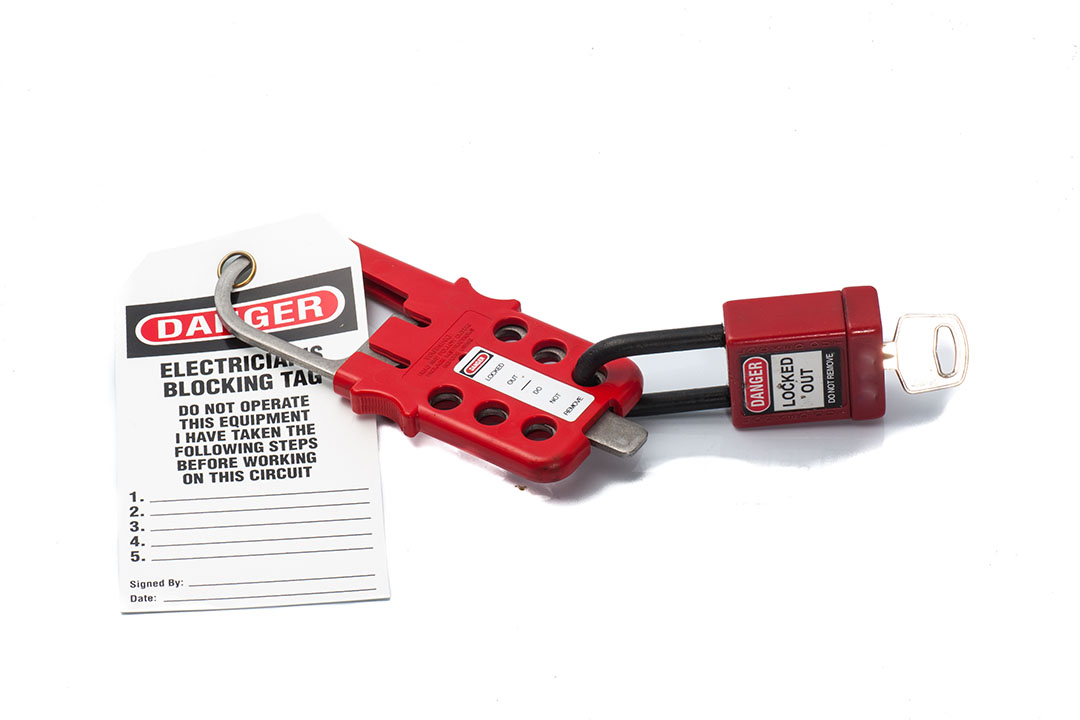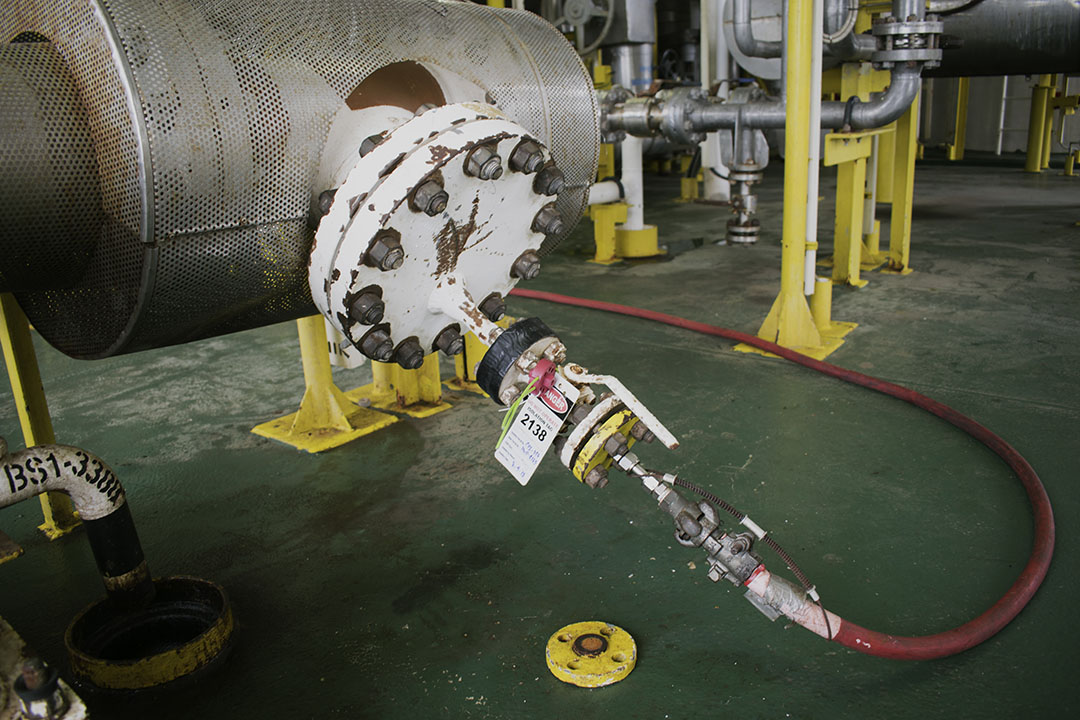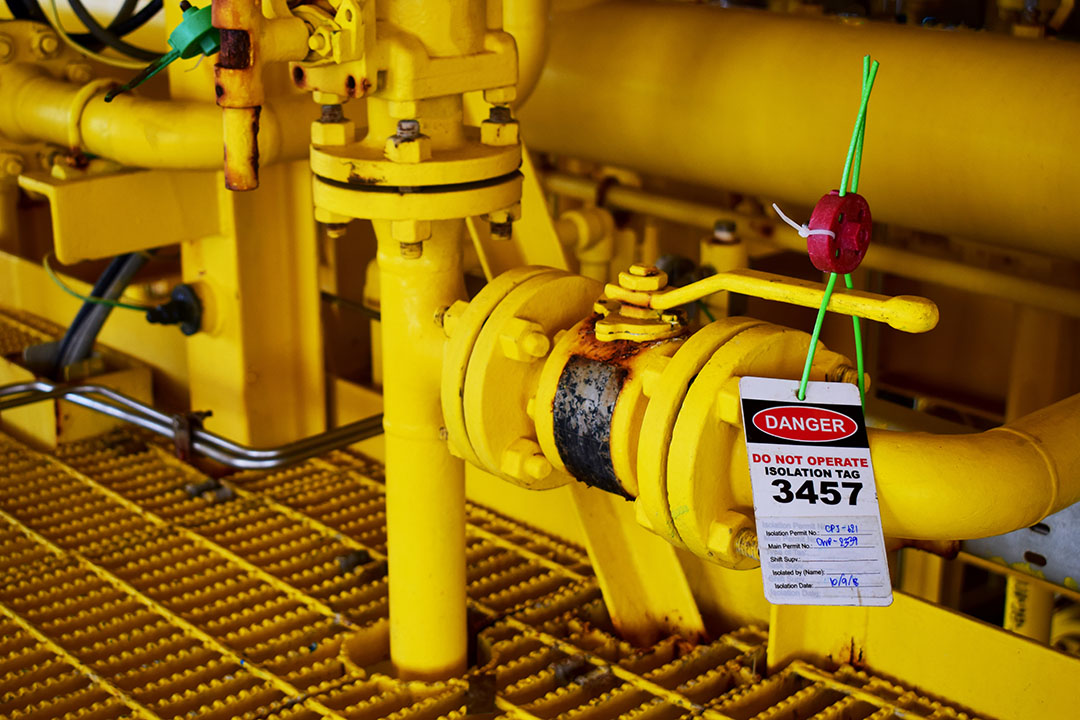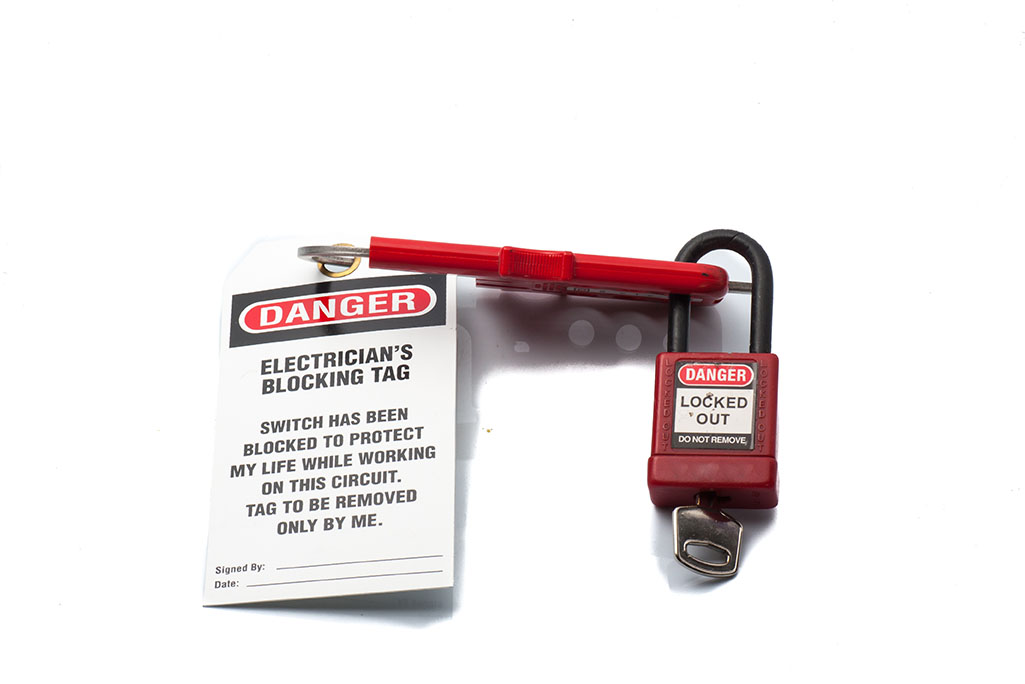Machinery and other workplace equipment tend to require some sort of maintenance or repairs. However, simply turning off the machinery or equipment is not always enough. Someone could turn the equipment back on, potentially causing serious injury or death to the person performing maintenance.
Even if the equipment is not turned on, it can contain stored electrical, mechanical or hydraulic energy that can also injure workers. Lockout/tagout is a system that blocks all incoming energy, and discharges all stored energy in the equipment, making it physically impossible for it to run or move. Workers need to be trained over lockout/tagout procedures in their workplace to protect themselves from injury.
What is Lockout/Tagout?

Lockout controls and prevents the release of hazardous energy by locking a machine’s energy-isolating device. Examples of energy-isolating devices are manual disconnect switches, circuit breakers, line valves or blocks. A lockout device is often as simple as a padlock but can be anything that secures the energy-isolating device in a safe position.
Tagout involves using a standard label or tag that says why the machine has been locked out, when the lock and tag were applied, and the name of the authorized person who locked and tagged out the system.
Looking for more online safety training content?
VIEW THE 800+ COURSES AVAILABLE!
The Purpose of Locks and Tags
Locks or lockout devices are used to physically secure each energy isolation point so the equipment can’t be energized during repair or maintenance. Devices that can be used with locks include chains, hasps and blind flanges.
Tags are simply warning devices and do not provide the type of physical restraint on the device that a lock provides. Tags should always be used with locks to draw attention to the fact that the equipment is locked out.
There are rare instances when a lock can’t be used on certain equipment. In those cases, there will be other systems in place that will provide at least as much protection as lockout/tagout would. There are even some exceptions where lockout/tagout is not required, such as if the machine is one that can be unplugged while the plug remains under the control of the authorized person.
Employee Roles

Lockout/tagout systems involve two types of workers: authorized people and affected people. An authorized person is someone with the knowledge, training and experience to engage in hazardous energy control. The authorized person generally performs the required repair or maintenance and they inform all affected employees that lockout/tagout procedures will be performed before beginning work on the equipment.
The authorized person puts on locks and tags, controls the keys to the locks being used, and is the only person allowed to remove locks or tags after work is finished. The authorized person might be the machine’s operator or someone else such as a designated repair person.
An affected person is any worker affected by the equipment being out of service and who is not involved with lockout/tagout or maintenance operations. Employees who work in the same area are also considered affected if their job duties are interrupted by the equipment being shut down.
Stored Hazardous Energy

Any piece of equipment can have an energy source. Some energy sources are apparent, such as electricity, heat in a furnace or gravitational energy from a falling object or piece of equipment. Other energy sources are less obvious, such as a tightly wound spring or air pressure in a pneumatic system. Controlling hazardous energy includes isolating the system from both its primary power source and any stored energy in the system.
Many machines store energy even after their energy sources have been isolated. Electrical equipment may have energy stored in capacitors. Machines that run on hydraulic or pneumatic energy can still retain pressure between a closed energy isolation device and the machine’s moving parts. Similarly, machines that run on chemical energy may still have fuel in the lines.
Springs and tension belts may contain stored mechanical energy. Moving parts such as pistons might be suspended in mid-motion and contain stored gravitational energy. If the part is released, gravity will cause it to swing down or fall.
All stored energy must be discharged and disengaged before repair or maintenance can begin, and all moving parts must be blocked securely in place or lowered so they will be unable to move during maintenance.
Lockout/Tagout Procedure
Your company should have a documented lockout/tagout program that reflects your company’s policies and the specific equipment at your work location(s). However, a general lockout/tagout procedure can play out like this:
- The authorized person will identify all sources of energy and how to keep them under control.
- The authorized person will inform all affected personnel about the impending lockout/tagout operation, including:
- The equipment to be locked out and tagged
- Why the equipment is being locked and tagged
- How long they expect the equipment to be out of service
- Who affected employees can contact for more information
- Affected personnel will leave the area and the authorized person will:
- Shut down the machine
- Isolate the system from hazardous energy
- Remove any stored energy
- Each person working on the machine will apply their own locks and tags.
- Personnel will perform the necessary maintenance on the machine.
- After maintenance is complete, repair personnel will make sure all tools and work materials have been removed and that all personnel are in a safe location away from hazardous areas.
- All repair personnel will remove their locks and tags and stay together to make sure no one is still working on the machine.
- Once everyone is clear of the machine and all locks and tags are removed, authorized personnel can re-energize the machine, then notify affected employees that maintenance is complete and that they can return to the work area.
Conclusion
Lockout/tagout requirements should never be ignored or taken lightly. A worker who works on a machine without de-energizing, locking and tagging it first could be seriously hurt or even killed if someone restarts the machine while the worker is still working on it.
It is vitally important that your employees are trained on lockout/tagout procedures in their work areas, because their lives or limbs could depend on them.


